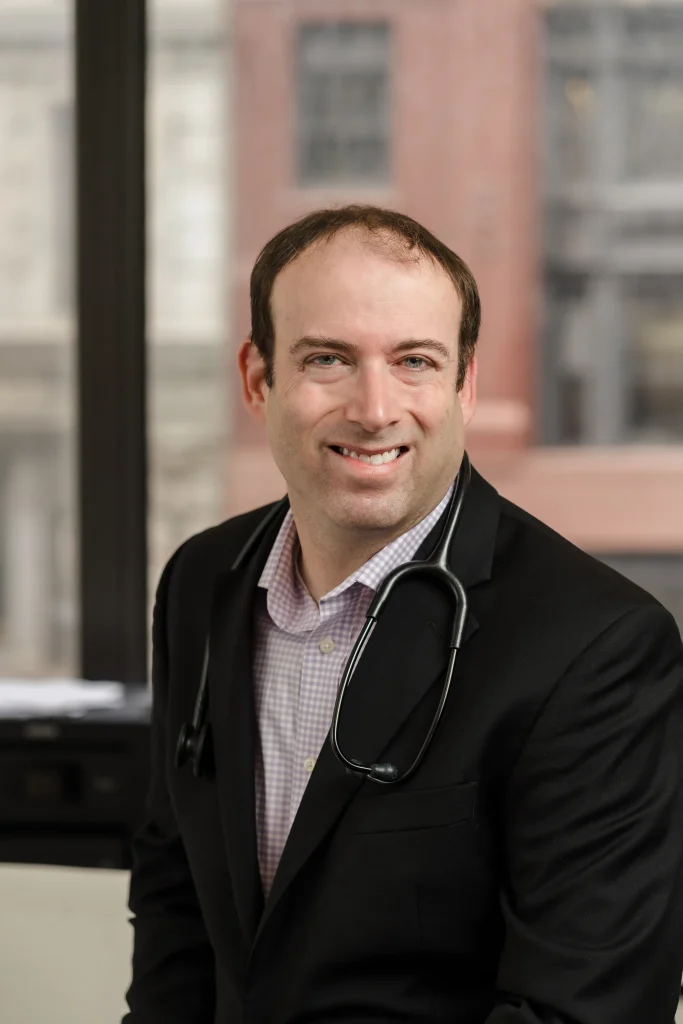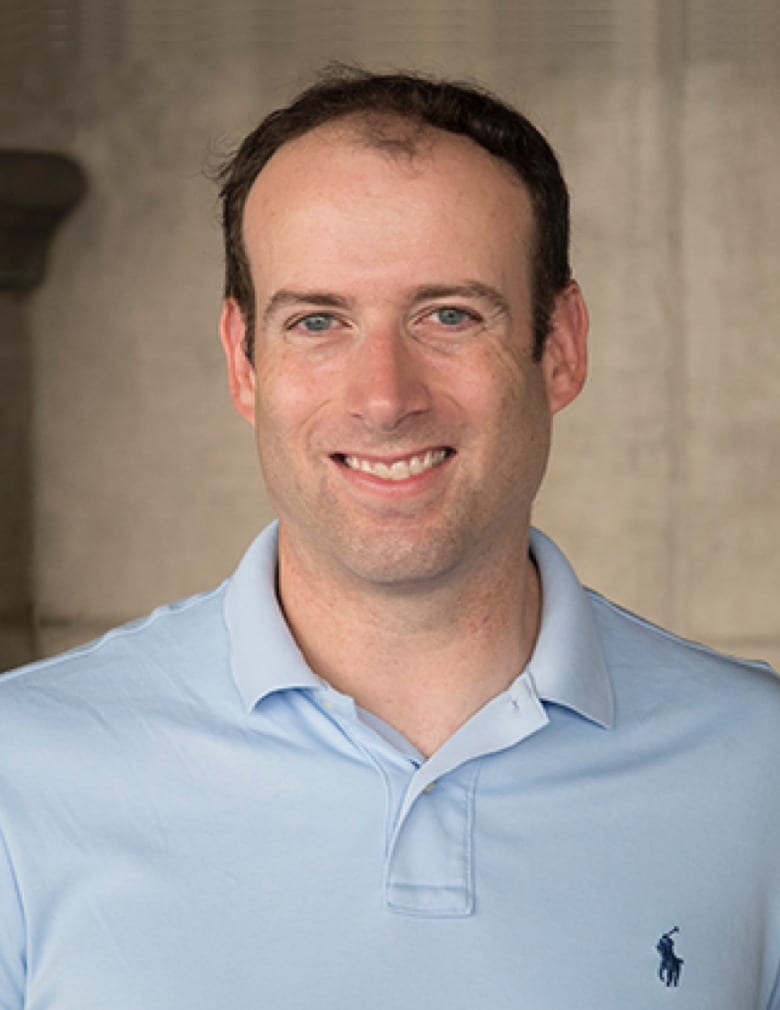
Dr. Neil Paulvin is on speed-dial for in-the-know New Yorkers looking to live longer, healthier lives. RAY ROGERS rings Dr. Paulvin and discovers that in Manhattan, health is truly wealth.
For a certain set of discerning New Yorkers interested in cracking the longevity code—living longer, healthier lives than previously thought imaginable—Dr. Neil Paulvin has become one of the must-see experts. The key to his success? “I’m like a translator,” he says. “I can take all of that complicated information that people are hearing online or from their friends and tell them what to do, how to do it, and what their goals should be. I can map out a full plan for them for all facets of their health.”
Specializing in functional medicine, integrative sports medicine, regenerative medicine, osteopathic manipulation, and craniosacral therapy, there’s not a lot he can’t advise on. “I can handle all of their concerns,” he says, “be it anti-aging, or ‘I have back pain,’ or ‘My gut is bothering me.’”
His quest for knowledge and seeking innovative, out-of-the box solutions stemmed from firsthand experience with chronic pain while in medical school at the University of Medicine and Dentistry of New Jersey. “I was dealing with headaches, and looking for the next, newest thing and best approach to help me get through that,” recalls the New Jersey native, speaking from his Midtown Manhattan office. “I went to multiple doctors to help me, and I ended up helping myself. That led me down a road of looking at alternative therapies like acupuncture, dry needling, and meditation, initially. I also have a sports medicine background, and that got me into the cool new stuff like PRP [platelet-rich plasma, which is plasma with many more platelets than what is typically found in blood] when it came out 15 years ago, which begat a lot of the hormone therapy, which begat anti-aging. It all started from that after med school to where I am today, mixing traditional and new-age approaches to try to help people optimize their health.”
“Patients are taking their health in their own hands and spending a lot of money to do it, trying to get the best that’s available to them. It’s been a real explosion, in Dubai, Ibiza, London, and Tokyo… there’s so many opportunities available to people that weren’t available before.”
Dr. Neil Pauvlin
Much of his clientele have tried doctors with more traditional approaches, without success, before finding Paulvin. “I tend to lend myself to patients who’ve seen 10 different doctors and they tell them they’re crazy, it’s in their head. I provide hope to people who’ve been told they have no hope.”
The incredible advances in the longevity field continue to wow him. He’s a fan of peptide therapy to combat inflammation, improve cognitive brain function, and help with mitochondrial health in the gut. And say goodbye to the days of the cookie-cutter approach to health. Today it’s all about personalized, comprehensive lab work that allows doctors like Paulvin to look at patient’s proteins, metabolism, and DNA to develop personalized health plans. “We’re looking at much more advanced specific heart markers, patients’ biological age, and we’re now taking stool samples to look at the microbiome in their gut,” he says. “We take all of that information as markers of their biological health, and we can hopefully prevent them from being sick.”
He’s particularly excited by modalities such as hyperbaric therapy and red-light therapy, which are now being used to treat Alzheimer’s, Parkinson’s, and concussions, “and helping patients deal with chronic pain issues that we couldn’t deal with before.”
The future of the longevity field is wide open, he notes, “with gene therapy and also the tech that’s coming down the pike, such as artificial intelligence. Already, AI heart studies are giving a much more advanced look at the heart, he says, “so we can look at the exact blockages to determine what type of blockage is it. There are so many things that we couldn’t do before. They’re now doing AI skin exams.”
Beyond that, the next big trend in his eyes is the increased popularization of medical tourism. “Two years ago, I’d suggest to patients they check out clinics in Canada or London, for example. Now, I’ll see a different patient just about every day who tells me they’re going to Canada or Switzerland to go to this clinic or that one. Especially in the affluent community, patients are taking their health in their own hands and spending a lot of money to do it, trying to get the best that’s available to them. It’s been a real explosion, in Dubai, Ibiza, London, and Tokyo… there’s so many opportunities available to people that weren’t available before.”
“I was dealing with headaches. I went to multiple doctors to help me, and I ended up helping myself. That led me down a road of looking at alternative therapies like acupuncture, dry needling, and meditation. It all started from that after med school to where I am today, mixing traditional and new age approaches to try to help people optimize their health.”
Dr. Neil Pauvlin
If a patient is interested in stem cell procedures, for instance, they must travel abroad, for legal reasons. “We’re probably the most limited in the world on that—if we take stem cells from you, we can’t manipulate them in the U.S. But in any other country you can go in there, add growth factors, or other specific things to make them work better. They’re using them for everything: anti-aging, to heal your rotator cuff, Alzheimer’s, other brain issues, and for gut health.”
But for generally healthy individuals, one doesn’t have to travel far or go to any extremes to reap the benefits of the current scientific knowledge in the health space today. The single most important longevity hack, according to Paulvin? Regular exercise (the data we have now, he notes, dictates a minimum of 60 to 90 minutes of weight-bearing exercise per week, and up to 30 minutes of cardio per week), with proper and consistent sleep being a close second.
Both of these are in short supply and high demand in Paulvin’s personal life at the moment. But cut the man some slack, the 50-year-old physician has a newborn at home (his first). “We have a nine-month-old girl and that’s changed things a lot. I don’t get much sleep unfortunately anymore. But in a vacuum, I try to maintain a normal sleep pattern, my circadian rhythm, seven days a week. I have patients who maintain normal sleep habits during the weekdays and wake up later on weekends; it’s called ‘social jetlag,’ and it can make you feel worse in terms of weight and energy.”
For exercise these days, Palvin squeezes it in whenever he can, even if it’s only for 10 minutes. Since he has a bad shoulder, he prefers lower body weight exercises two to three times per week and high-intensity cardio. “You can also achieve a lot just by doing a full yoga program,” he notes. “If, say, you have an injury and can’t lift weights, if you do a full yoga practice, you’re getting enough body weight exercises and cardio to achieve those same goals.”
Beyond those basics, he swears by saunas three times a week, and of course maintains a healthy diet. “I pay attention to my gut a lot more, so I do a lot of colostrum [a nutrient-rich supplement from bovine breast milk that’s touted for gut health, and other benefits], I’ve increased my fiber intake, and I do a lot of red-light therapy.” For someone deeply invested in health, living in New York City certainly has its perks. “I love the fact that if I want to jump into a hyperbaric chamber or do some advanced yoga, it’s all available to me right here in Manhattan; I don’t have to travel an hour to do it.”


